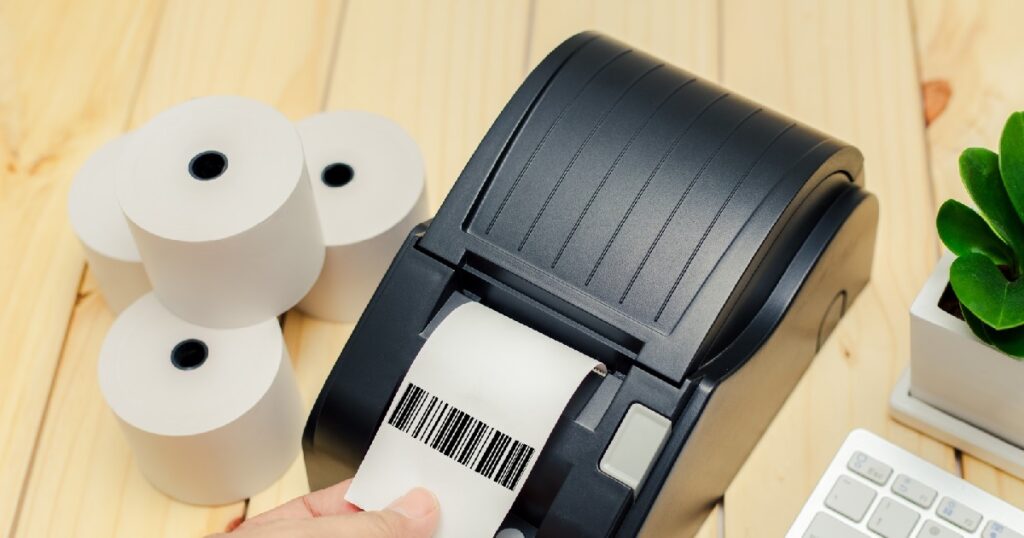The two primary options available are thermal rolls and traditional paper. Understanding the differences between these two materials is essential for making an informed decision that aligns with your business needs. In this article, we will explore the benefits and drawbacks of thermal rolls and traditional paper to help you determine which is the right choice for your business. In the ever-evolving landscape of retail and service industries, businesses are continually looking for ways to improve operational efficiency and customer satisfaction. One area that often gets overlooked is the choice of printing materials for receipts and labels.
What Are Thermal Rolls?
Thermal rolls are specially coated paper rolls designed for thermal printers. These printers work by applying heat to the paper, which reacts with the thermal coating, producing a clear, high-quality print without the need for ink or ribbons. Thermal rolls are widely used in point-of-sale (POS) systems for printing receipts, tickets, and labels.
Benefits of Thermal Rolls:
- Speed and Efficiency: Thermal printers are known for their rapid printing capabilities, allowing businesses to complete transactions quickly. This speed enhances customer satisfaction, especially in high-traffic environments.
- No Ink Required: Since thermal rolls do not require ink or ribbons, they simplify the printing process and reduce ongoing maintenance costs. This can lead to significant savings in the long run.
- High-Quality Prints: Thermal rolls produce sharp and clear prints, making them ideal for receipts, tickets, and labels that require precision, such as barcodes and QR codes.
- Less Mess: Unlike traditional paper, which can smudge or smear due to ink, thermal rolls produce prints that are resistant to smudging and fading, ensuring that important information remains legible.
- Environmentally Friendly Options: Many manufacturers now offer BPA-free thermal rolls, providing a safer option for businesses concerned about the environmental impact of their printing materials.
Drawbacks of Thermal Rolls:
- Fading Over Time: One significant downside to thermal rolls is that the print can fade over time, especially when exposed to heat, light, or moisture. This can be a concern for businesses that require long-term record-keeping.
- Limited Shelf Life: Thermal rolls can have a limited shelf life compared to traditional paper. Improper storage conditions can lead to degradation of the thermal coating, affecting print quality.
- Higher Initial Costs: The upfront cost of thermal printers and rolls can be higher than traditional paper and ink printers, which may be a consideration for small businesses.
What Is Traditional Paper?
Traditional paper refers to standard printing paper that requires ink or toner for printing. This includes receipt paper, printer paper, and specialty papers used for various applications. Traditional paper can be used with any standard inkjet or laser printer.
Benefits of Traditional Paper:
- Durability and Longevity: Printed materials on traditional paper tend to last longer than thermal prints, especially if printed with high-quality ink. This makes traditional paper ideal for businesses that need to retain records for extended periods.
- Cost-Effectiveness: Traditional paper and ink printers are often less expensive upfront compared to thermal printers. For businesses with lower transaction volumes, this may be a more economical option.
- Versatility: Traditional paper can be used for various applications beyond receipts, including reports, marketing materials, and official documents, making it a more versatile choice for businesses.
- Better Color Options: If your business requires color prints, traditional paper can offer better results, as thermal printers typically produce monochrome prints.
Drawbacks of Traditional Paper:
Ongoing Costs: The need for ink or toner can lead to higher ongoing costs with traditional paper. These costs can accumulate over time, especially for businesses with high print volumes.
- Slower Printing Speeds: Traditional printers may not match the speed of thermal printers, particularly in high-demand situations. Slower printing can lead to longer wait times for customers.
- Maintenance: Traditional printers require regular maintenance, such as ink replacement and cleaning, which can take time away from core business operations.
- Mess and Smudging: Ink can smudge or smear, leading to potential readability issues, especially if receipts are exposed to moisture or friction.
Transaction Volume:
If your business experiences high transaction volumes, such as in fast-food restaurants or retail stores, thermal rolls may be the better choice. Their speed and efficiency can help keep lines moving and enhance customer satisfaction. Conversely, if your transaction volume is lower, traditional paper may be more cost-effective. If your business requires long-term record-keeping, traditional paper may be more suitable due to its durability and resistance to fading. However, if you primarily need receipts for short-term transactions, thermal rolls will serve your needs efficiently.
Budget Constraints:
Consider your initial investment and ongoing operational costs. While thermal printers and rolls can be more expensive upfront, they may save money on ink and maintenance in the long run. On the other hand, traditional printers have lower initial costs but higher ongoing expenses.
Environmental Considerations:
If your business prioritizes environmental sustainability, consider the availability of eco-friendly thermal rolls, such as BPA-free options. Traditional paper can also be sourced from recycled materials, so weigh your options based on your sustainability goals.
Application Needs:
Consider what you need the printing materials for. If you require color prints or versatility for various documents, traditional paper is the better choice. However, for high-speed transactions with clear barcodes or QR codes, thermal rolls are superior.
Conclusion:
Choosing between thermal rolls and traditional paper is an essential decision for any business that relies on printed receipts, labels, or documents. Each option has its own set of advantages and disadvantages, so it’s crucial to assess your specific needs, transaction volumes, budget, and operational environment.
Ultimately, the right choice will depend on the unique circumstances of your business. By carefully evaluating your requirements and understanding the differences between thermal rolls and traditional paper, you can make an informed decision that enhances operational efficiency, improves customer satisfaction, and supports your business goals.



